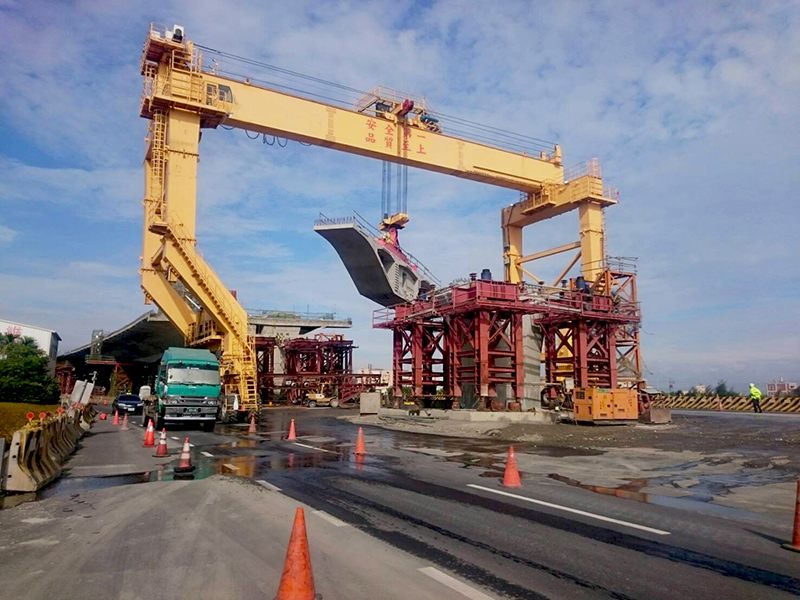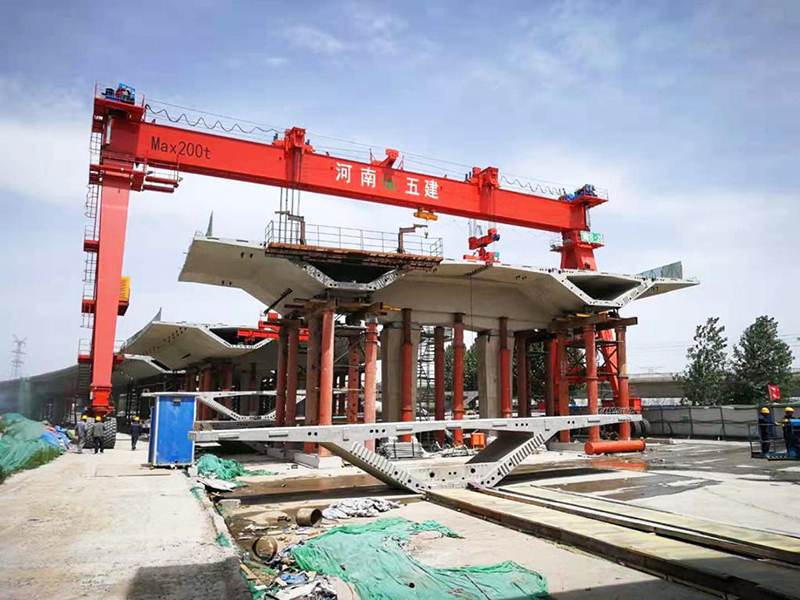Bridges stand as marvels of engineering, connecting distant lands and facilitating the smooth flow of traffic. Behind these architectural wonders lies a crucial element that plays a pivotal role in their construction – cranes. Cranes are indispensable machines in the world of bridge construction, serving as the backbone for lifting, placing, and assembling the myriad components that come together to form a sturdy and reliable structure.

Heavy Lifting Abilities:
One of the primary functions of cranes in bridge construction is their unparalleled capacity for heavy lifting. Bridges comprise massive components such as steel beams, concrete segments, and structural elements that demand precision and strength during installation. Cranes, equipped with various lifting mechanisms, effortlessly hoist these colossal elements into position, ensuring that each piece fits seamlessly with the next.
Assembly of Structural Components:
Bridges are intricate puzzles where every piece must align perfectly for the structure to be sound. Cranes play a crucial role in the assembly of these structural components, ensuring that beams, girders, and supports are lifted into place with precision. The ability of cranes to maneuver these components accurately contributes to the stability and longevity of the bridge.
Versatility in Terrain:
Bridge construction often takes place in diverse and challenging terrains, from urban landscapes to remote areas with difficult access. Cranes come in various types, including mobile cranes, straddle cranes, tower cranes, and crawler cranes, each designed to navigate specific terrains. Their versatility allows construction teams to overcome geographical obstacles, making bridge projects feasible in a wide range of locations.
Efficiency and Speed:
Time is of the essence in construction projects, and cranes significantly contribute to expediting the building process. The efficiency of cranes in lifting and placing heavy components reduces the overall construction time, making it possible to complete projects within deadlines. This not only saves costs but also minimizes disruptions to traffic and communities.
Enhanced Safety:
Safety is paramount in any construction project, and cranes are equipped with advanced safety features to ensure the well-being of workers and the integrity of the structure. Modern cranes come with sophisticated control systems, sensors, and fail-safes to prevent accidents and ensure that heavy loads are lifted and placed securely. This commitment to safety is crucial in complex bridge construction projects.

Cost-Effectiveness:
While the initial investment in crane equipment can be substantial, their cost-effectiveness becomes evident in the long run. The speed at which cranes operate reduces labor costs and allows for quicker project completion. Additionally, their ability to handle heavy loads minimizes the need for excessive manpower, ultimately resulting in significant savings for construction companies.
Innovations in Crane Technology:
Advancements in technology continue to revolutionize the construction industry, and cranes are no exception. The integration of automation, remote control, and telemetry systems enhances the precision and efficiency of cranes for construction. These innovations not only improve the construction process but also contribute to minimizing the environmental impact of bridge projects.
Conclusion:
In the realm of bridge construction, cranes emerge as unsung heroes, shouldering the weight – both literally and figuratively – of these monumental structures. From lifting heavy components to ensuring precision in assembly, cranes play a vital role in the creation of bridges that connect communities and facilitate the movement of people and goods. As technology continues to evolve, so too will the capabilities of cranes, further solidifying their indispensable role in shaping the infrastructure that defines our world.